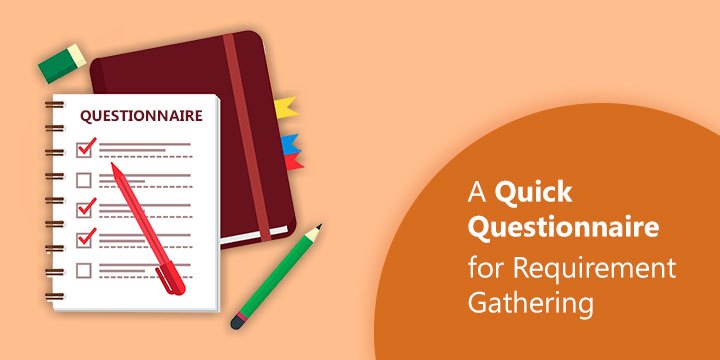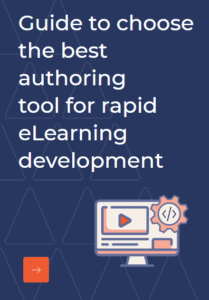The first step in eLearning design is often touted as the most complex and the most layered process. It involves interactions, discussions and data gathering and sets the base for the eLearning project. But, quite often it ends up becoming a to and fro task wherein there is always a new list of unanswered questions as the process of learning development gets started. Very often this thread of questions continues right till the end, forcing last minute additions, changes and modifications that slows down the development process, affects the quality and impacts the project delivery dates too.
Not the best way to impress those in lookout for fool-proof, fail-safe solutions. What can be done to make the process smoother? Well, as with anything having a checklist and in this case a go to-questionnaire can be quite assistive. Here’s our list, the questions we usually ask during the requirement gathering phase for any eLearning project.
Why eLearning? What are the Reasons that are driving the change?
For starters it is always better to have clarity on the requirement for eLearning. If an organization is newly stepping into eLearning, then there must be notable/prominent reasons to do so. Ensure that the whole thing is not based on just whims and wishes. Understand which changes (technological, policy-wise, or learners) are driving the switch to eLearning. As eLearning providers, it is better to have clients who know and understand their requirements, but if otherwise you can always start by explaining the pros and cons.
What Do You expect (with the eLearning, the whole learning strategy)?
If they are clear about requiring eLearning, then move on to this question. Well, not that you will get the answer right at the first go but asking this is the start. It is essential to understand what the expected performance changes are. What are the standards or procedures in place that should be followed? This information often requires deeper research, interviews with HR, Line managers, looking into the Standard Operating Procedures and corporate guidelines etc.
What is the Current Learning Scenario?
Though this might be partially answered through the first question, here it is more about clarity. The aim here is to identify how the employees/learners/users are currently learning and performing their task. This information again requires discussions with employees (a sample group maybe), supervisors, and managers. You may even have to look into the existing performance records or other metrics and documentation and spend some time to observe.
What Skill Gaps/Performance gaps do you wish to fill?
Every learning strategy has a goal, ideally to improve performance and to fill certain skill-gaps. Knowing that exactly can give a lot of information towards the content required for eLearning. This is where a lot of brainstorming takes place as there are multiple factors that usually affect performance, like existing Knowledge and skills, Motivation, incentives, the learning capacity, infrastructure, schedule, guidance, feedback etc. Proper training can solve the performance issues caused due to lack of knowledge and skills. However, for skill-gaps due to lack of infrastructure, training may not be the answer.
What about the learners? The existing technological infrastructure and technological know-how of learners?
Understanding the learners is crucial to determine what kind of learning they need, what modes of learning can be used etc. The existing hardware, permission regulations of the organization too play a crucial role in devising the learning strategy. The technological awareness of the learners is a necessary information too.
In certain cases, the SME’s and stakeholders have very clear idea about the requirements including the kind of features to be included which makes the whole process interactive, interesting and productive. Once all the necessary inputs are gathered comes the analysis part. Based on which we can recommend a training solution to management. It can be in any form based on the requirement: eLearning, blended Learning, performance support, ePUB, or simple interactive, simulations and so on.
Ideally all the ground work helps in identifying the right solution, right authoring tool, design model etc. And if the questions discussed above don’t suffice there is always the action mapping-based flowchart by Cathy Moore that can help.
Feel like discussing? Need assistance in identifying the right solution? Knowzies may have the answers. Write to us at info@www.knowzies.com or drop by our office for a face-to-face discussion.



